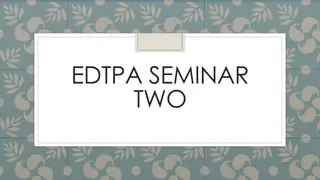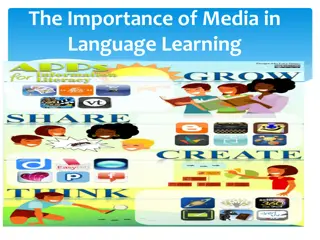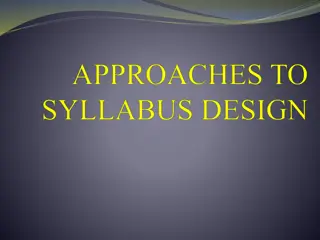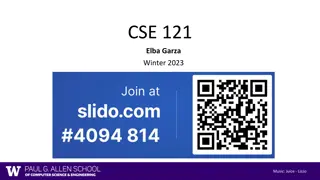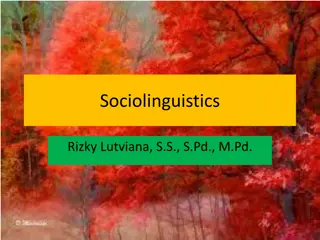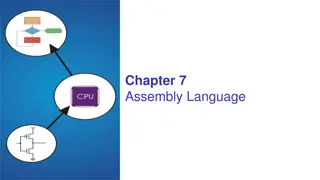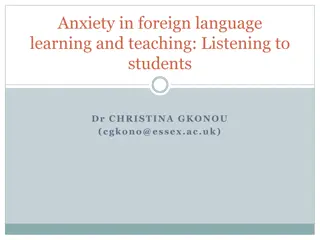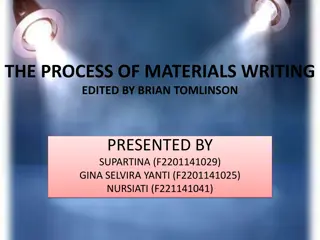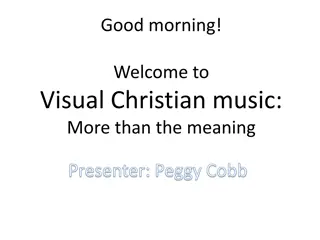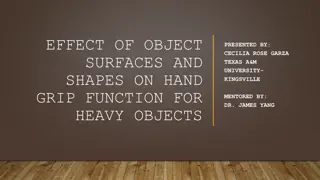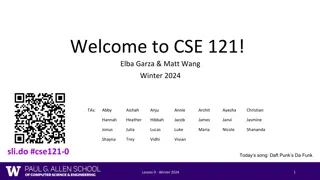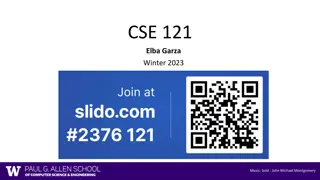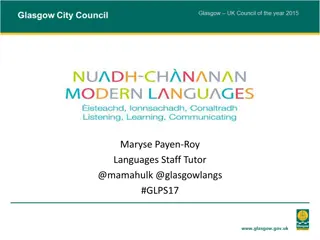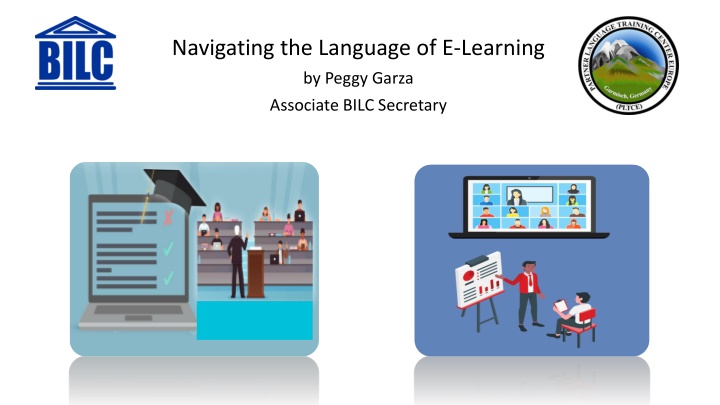
Exploring E-Learning Terminology and Models
Discover the world of E-Learning with insights into terminology like synchronous learning, asynchronous learning, and micro-learning, along with a comparison of blended learning and hybrid learning models. Stay updated on the trends shaping modern education.
Download Presentation

Please find below an Image/Link to download the presentation.
The content on the website is provided AS IS for your information and personal use only. It may not be sold, licensed, or shared on other websites without obtaining consent from the author. If you encounter any issues during the download, it is possible that the publisher has removed the file from their server.
You are allowed to download the files provided on this website for personal or commercial use, subject to the condition that they are used lawfully. All files are the property of their respective owners.
The content on the website is provided AS IS for your information and personal use only. It may not be sold, licensed, or shared on other websites without obtaining consent from the author.
E N D
Presentation Transcript
Navigating the Language of E-Learning by Peggy Garza Associate BILC Secretary
2021 BILC Conference Theme 2021 Professional Development Seminar Theme Keeping Pace with the Times: Providing Flexible and Timely Training Solutions Flexible Training Models: Shaping the Future Learning Journeys
What is E-Learning? E E- -Learning: Learning: A learning system or program based on formal A learning system or program based on formal teaching that utilizes digital tools and electronics. teaching that utilizes digital tools and electronics. What terms do you know?
E-Learning Terms Definitions A. Learners engage with content and activities all at the same time; involves real time interaction with teachers and learners. Remote learning B. A learning method where the learners can control the amount of material they consume and the duration of time they need to learn the new information properly. Asynchronous learning C. The process of teaching and learning through the use of technology, such as video conferencing and discussion boards, to learners at different geographical locations. Synchronous learning Self-paced learning D. A method of delivering content to users in small, bite-sized digestible chunks of a few minutes, allowing learners to recall content more efficiently and effectively. Micro-learning E. Learners can access and learn content at their own time and pace; does not involve real-time interaction between teacher and learner.
CHECK YOUR ANSWERS C. The process of teaching and learning through the use of technology, such as video conferencing and discussion boards to learners at different geographical locations. Remote learning E. Learners can access and learn content at their own time and pace; does not involve real-time interaction between teacher and learner. Asynchronous learning A. Learners engage with content and activities all at the same time; involves real time interaction with teachers and learners. Synchronous learning B. A learning method where the learners can control the amount of material they consume and the duration of time they need to learn the new information properly Self-paced learning D. A method of delivering content to users in small, bite-sized digestible chunks of a few minutes, allowing learners to recall content more efficiently and effectively. Micro-learning
Is there Is there a a d difference Blended Blended Learning? Learning? ifference b between etween Hybrid and Hybrid and
Blended Learning vs Hybrid Learning: What is the difference?
Blended Learning vs Hybrid Learning: What is the difference? Hybrid Learning Blended Learning In a hybrid learning model, learning takes place both in residence and remotely at the same time. Course material and online support are available at all times during and after the class. Learners can choose to physically attend the classes partly or completely or follow them virtually from any location also partly or completely. Blended learning is a combination of in-person and online instruction where learners interact with the instructor, the material, and others through both a physical classroom and an online platform. In blended learning, online learning supplements and complements in- person learning in the classroom.
Benefits of Each Learning Model adapted from Edly Blended Learning Increased personalized attention is provided in-person More interaction among the learners leading to sharing knowledge and experiences Equal opportunities for all as everyone in the classroom gets the same attention Hybrid Learning Remote access to the lecture eliminates the geographical boundaries; thus, a wide audience can pick the course Boost students productivity by enabling students to get education in their preferred mode of learning Saves time and energy since learners are not bound to the class in-person
Challenges of Each Learning Model adapted from Edly Blended Learning Increasing use of technology and access to the Internet may raise plagiarism and credibility issues Work overburden on instructors as it is challenging to design a syllabus that has the perfect combination of in-person and online learning Hybrid Learning Collaborative assignments can become unfair when some groups are working together remotely while some are working in the classroom Remote learners can face Internet connectivity issues and technical difficulties Keeping learners engaged, especially online ones, throughout the course, can be difficult
Questions? Questions?


